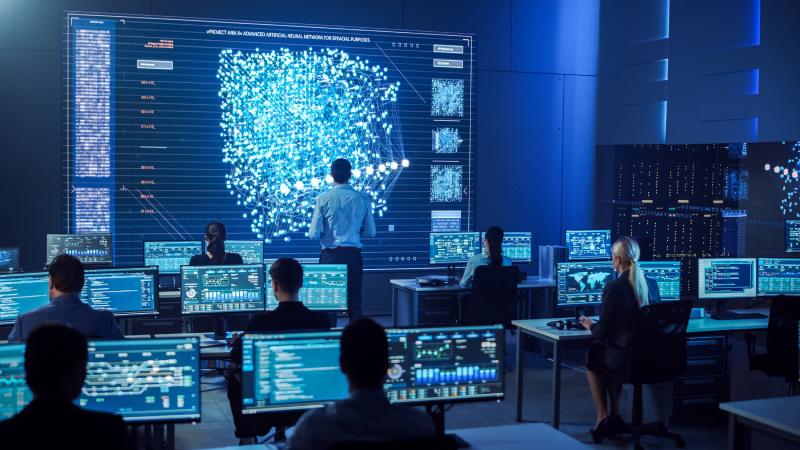
EDR and MDR: A Comprehensive Guide
In today’s fast-paced digital world, cyber threats are constantly evolving, making robust cybersecurity solutions essential for businesses of all sizes. New technologies like Endpoint Detection and Response (EDR) and Managed Detection and Response (MDR) are designed to go well beyond regular Antivirus software to safeguard your organization. Today we’re digging into the differences between EDR and MDR, their features, and how they benefit businesses like yours.
Endpoint Detection and Response (EDR) focuses on securing endpoint devices. These include laptops, smartphones, and servers. This type of solution monitors these devices, detects threats, and provides tools for your security team to investigate incidents. With the growing use of endpoint devices in daily operations, EDR plays a crucial role in protecting your business from potential cyberattacks.
Managed Detection and Response (MDR) offers a more comprehensive approach, covering network, cloud, and endpoint security. This solution combines software, expert support, and services from third-party vendors to protect your entire IT infrastructure. MDR benefits include continuous monitoring, threat detection, incident response, and remediation, freeing you up to focus on your core business operations.
EDR and MDR: Spotting the Differences
Now that we’ve outlined the basics, let’s compare their fundamental differences. EDR specifically targets endpoint security, while MDR offers a broader range of protection. Regarding implementation, EDR is a software solution installed on devices. MDR takes it a few steps further by combining technology and services from an external provider.
An easy way of thinking about the two is that an in-house team would be responsible for managing EDR. In contrast, MDR providers handle threat detection and response for you.Now let’s talk specifics.
Key Components of Endpoint Detection and Response (EDR)
Endpoint Data Collection
EDR solutions collect data from endpoint devices, such as laptops, desktops, smartphones, and servers, to monitor user activity, system processes, and network events. By gathering this information, EDR tools can identify potential security risks and flag suspicious activities.
Threat Detection and Analysis
EDR systems use advanced analytics, such as machine learning and behavioral analysis, to detect and identify threats. By analyzing the collected data, these tools can recognize patterns indicative of malware, ransomware, or other cyberattacks, and generate alerts for further investigation.
Incident Investigation and Response
Once a potential threat is detected, EDR solutions provide investigation tools to help security teams examine the flagged events. This includes features like endpoint isolation, process analysis, and data visualization, which enable analysts to understand the nature of the threat and determine the appropriate response.
Threat Intelligence Integration
EDR platforms often integrate with external threat intelligence feeds, providing up-to-date information on known threats, indicators of compromise (IOCs), and attacker tactics, techniques, and procedures (TTPs). This integration helps security teams stay informed of the latest threats and improve their ability to detect and respond to attacks.
Endpoint Remediation
After investigating and confirming a threat, EDR solutions offer remediation capabilities to mitigate the attack’s impact. These features include quarantine and deletion of malicious files, endpoint isolation to prevent the spread of malware, and system rollback to restore affected devices to a safe state.
Reporting and Dashboard
EDR tools provide comprehensive reporting and customizable dashboards, which help security teams monitor the overall health of their endpoint environment. These features offer real-time visibility into detected threats, ongoing investigations, and remediation actions, enabling teams to track their cybersecurity efforts and stay informed of their organization’s security posture.

Key Components of Managed Detection and Response (MDR)
Comprehensive Threat Monitoring
In additional to data collection similar to EDR products, MDR providers continuously monitor an organization’s entire IT infrastructure, including cloud environments. This way, MDR can offer a more holistic view of an organization’s security posture.
Advanced Threat Detection and Analysis
Similar to EDR, MDR services use advanced analytics to detect and identify threats. MDR providers often have specialized expertise that enhances their ability to recognize emerging and sophisticated attacks that may evade traditional security measures.
Incident Investigation and Triage
Taking EDR detection capabilities a step further, MDR providers perform an initial investigation and triage to determine the severity and validity of the alerts. By filtering out false positives and prioritizing high-risk incidents, MDR services can help organizations focus their resources on the most critical threats.
Incident Response and Remediation
In addition to Threat Intelligence feeds, MDR providers provide expert incident response support, guiding organizations through containing and mitigating confirmed security incidents. This can include providing actionable recommendations, assisting with implementing remediation measures, and, in some cases, even taking direct action on behalf of the organization to resolve the incident.
Threat Hunting
Many MDR services offer proactive threat hunting. Security analysts actively search for indicators of compromise (IOCs) and hidden threats within the organization’s existing environment. This proactive approach helps uncover attacks that may have evaded detection by automated security tools, further enhancing an organization’s security posture.
Combining EDR and MDR for Comprehensive Security
By incorporating both EDR and MDR into your cybersecurity strategy, you can maximize protection against evolving threats. This combined approach enhances your security posture and ensures comprehensive coverage. Consider your organization’s unique needs and resources to determine if deploying both solutions best fits your business.
Choosing the Right Solution for Your Business
To select the best cybersecurity solution, assess your business size, industry, and specific needs. Smaller organizations may find EDR sufficient, while medium-sized businesses may benefit from the added support and resources MDR provides. Evaluate different vendors and solutions, and look for those with solid track records and positive reviews.
Understanding the distinctions between EDR and MDR and their respective strengths and weaknesses is vital for businesses seeking to bolster their cybersecurity. By carefully evaluating your organization’s unique requirements, you can make informed decisions about which solution, or combination of solutions, will best protect your business from cyber threats. Stay proactive in your cybersecurity efforts and safeguard your organization’s future.
Of course, with Managed Services from Hermetic Networks, your organization can take advantage of EDR, MDR, local experts, and third-party assistance. All of our plans include modern security tools for every endpoint, network device, server, and even cloud infrastructure, fully monitored and managed by seasoned professionals.
Get in touch today to learn how Hermetic Networks can secure your business infrastructure and help you focus on your core business.





